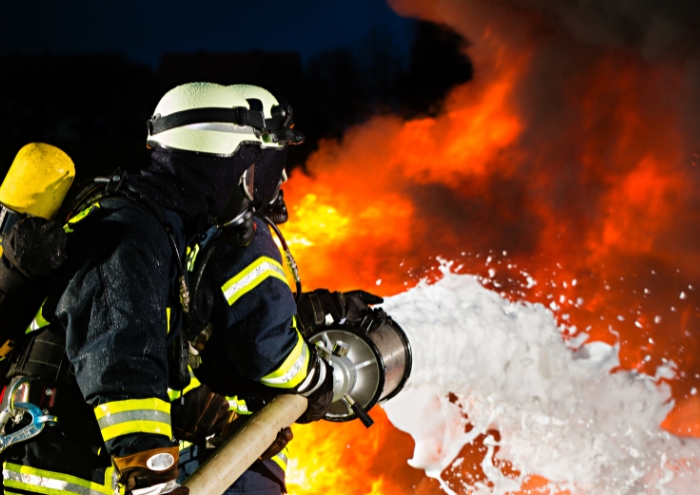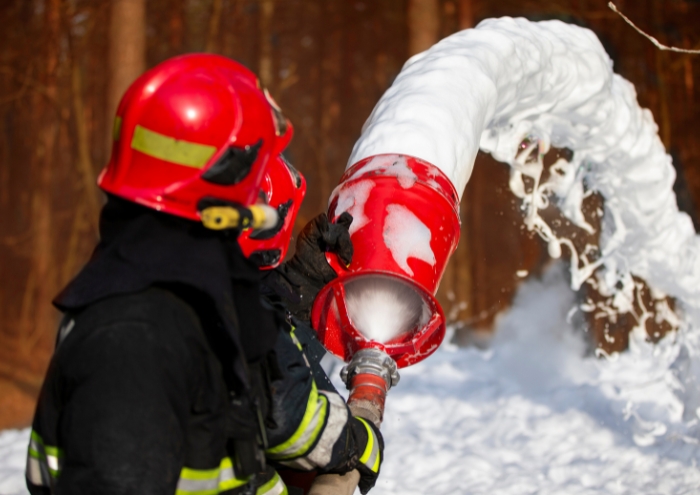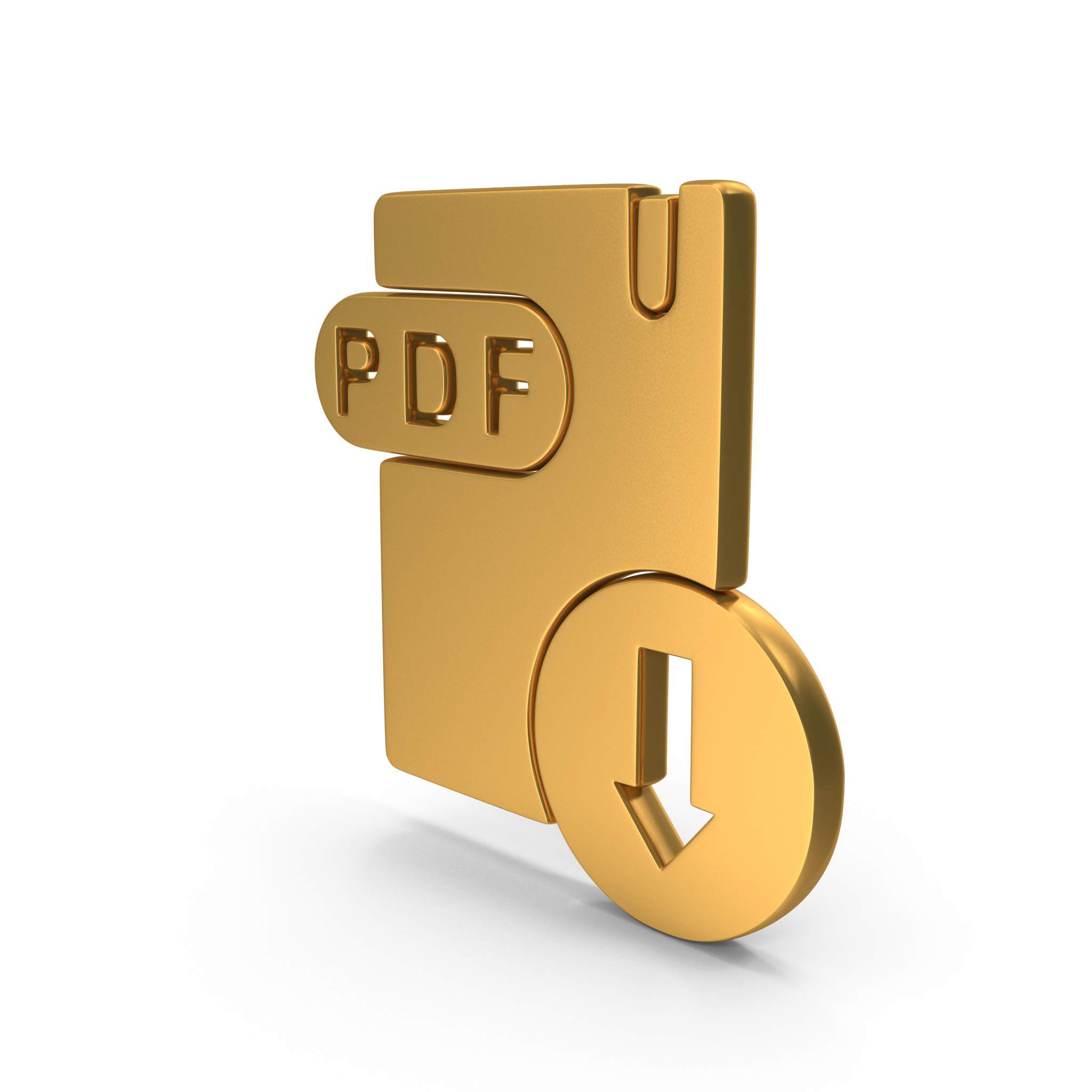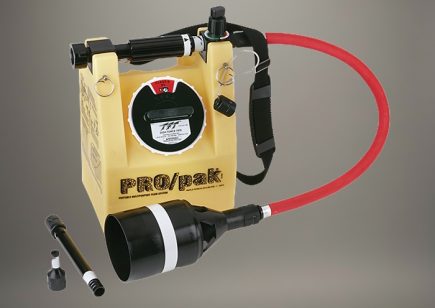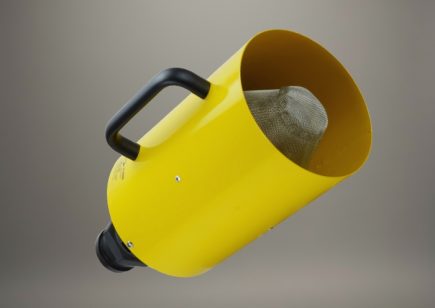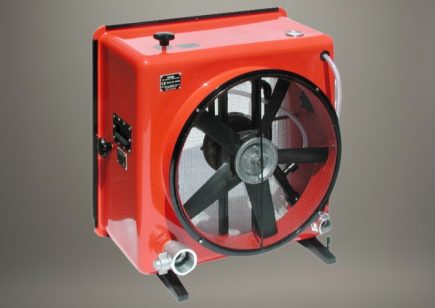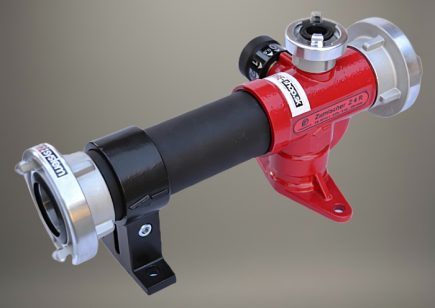AFFF (1% - 3% - 6%)
AFFF is an acronym for "Aqueous Film Forming Foam." They are generally used in concentrations of 1, 3, and 6%, although in some systems, such as CAFS (Compressed Air Foam Systems), more concentrated solutions such as 0.5% can be used.
The incorporation of fluorinated surfactants in their formulation allows the surface tension of their solutions to be lowered to very low values, allowing an aqueous film only a few microns thick to form on the hydrocarbon, despite having a higher density than the latter. This film protects the fuel from contact with air and therefore extinguishes the fire.
Application by non-aspirating systems allows for long distances, which improves the safety of firefighters and extinguishing systems.
The more concentrated the AFFF, the better the logistical and economic conditions for the extinguishing systems.
Although they can also be used in subsurface injection systems, it is advantageous to use fluoroprotein foams in this specific case for this application due to their high oleophobicity.
AFFF ANTIALCOHOL (AFFF-AR)
They are aqueous film-forming foam concentrates that are also useful for fighting fires involving polar solvents such as alcohols. Water-soluble fuels, such as acetone, present a different problem than hydrocarbons. While the latter can be extinguished by direct application to the fuel surface, polar solvents are extinguished by gentle or indirect application against a screen.
These foams are of two types: low-viscosity Newtonian foams and high-viscosity pseudoplastic foams. In Newtonian foams, the alcohol is extinguished because the foam contains fluorinated surfactants that prevent the foam from breaking down on contact with the alcohol. In pseudoplastic foams, contact with the alcohol creates a polymeric cushion that protects the remaining foam from breaking down.
Newtonian resins are easier to use and don't have the problems associated with high viscosity, such as skinning, gelation, and difficulty pumping at low temperatures. Newtonian resins are typically two to three times more expensive than pseudoplastic resins.
Depending on the concentration used for hydrocarbon fires (1–3–6%) or polar liquid fires (3–6%), AFFF/AR will be designated as 1×3, 3×3, 3×6 or 6×6). The choice of the appropriate type will depend on the type of risk. For example, if the risk of hydrocarbons and alcohols is the same, a suitable choice would be 3×3. If 90% of the risk is from hydrocarbons, a 1×3 would be preferable.
FFF (FLUORINE-FREE FOAM CONCENTRATES)
Fluorine-free foam concentrates are fluorine-free and therefore unable to form an aqueous film on hydrocarbons.
They have been developed to replace fluorinated foams due to increasingly restrictive regulations on the Persistence, Bioaccumulation, and Toxicity (PBT) of AFFF foam concentrates.
They also come in two types: Newtonian and pseudoplastic. In this case, if anti-alcohol properties are required, pseudoplastic foams are preferred.
Their concentrations range from 1 to 6%, although in special applications such as CAFS they are available from 0.3%.
SHORT-TERM FOREST RETARDANTS
These foam concentrates have very good foaming and wetting properties at very low concentrations (generally from 0.1% to 1%). Since their action lasts as long as the foam retains the water it carries, they are used both for active protection (attacking the fire to extinguish it) and for protection against reignition of the treated substrate. They are dosed by venturis, pumps, etc., and are used as a wetting agent (0.1-0.2%) or as a foaming agent (0.3-1%), depending on the desired foam consistency. They can be applied by ground methods (low or high pressure, CAFS, fire trucks), etc.) or aerial methods (fixed wing, usually seaplanes, or mobile wing, usually helicopters equipped with a helibucket or Bambi bucket).
It must have rapid wetting, high expansion, slow drainage and very low corrosiveness against the metals used such as iron, brass, aluminum, magnesium, etc.
CONSERVATION
All foam concentrates described have a life expectancy of at least 5 years if properly stored in their original containers.








